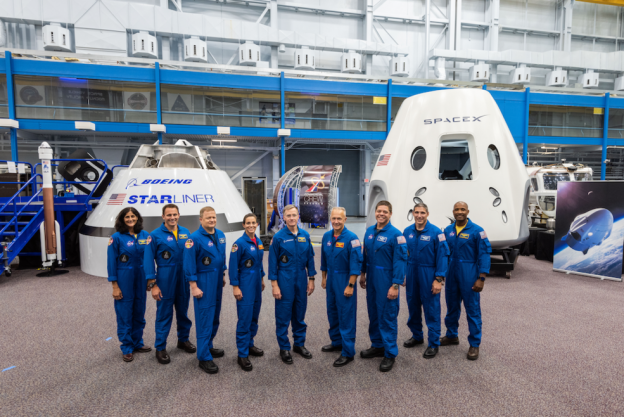The last time American astronauts travelled to space aboard an American-made spacecraft was July 21, 2011, over seven years ago.
The Space Shuttle Program was ended prematurely by President Obama, who then cancelled development of what was supposed to be the follow-up manned spacecraft, the Constellation. The result of the former president’s underfunding of the Orion, a crewed spacecraft program designed for deep space, is that no NASA vessel will take a crew into space until 2023.
Fortunately, an end is in sight for the utter humiliation America has endured as it was forced to pay Russia to ferry U.S. astronauts to and from the space station, which was built by the Shuttle program. Two commercially-built spacecraft, the Boeing’s CST-100 Starliner and SpaceX’s Crew Dragon, should be ready to take Americans into orbit onboard native-built vessels within this decade. In contrast to his predecessor, President Trump has emphasized the importance of NASA’s crewed space endeavors.
On August 3, NASA introduced first U.S. astronauts who will fly on American-made, commercial spacecraft to and from the International Space Station.
“Today, our country’s dreams of greater achievements in space are within our grasp,” said NASA Administrator Jim Bridenstine. The agency assigned nine astronauts to crew the first test flight and mission of both the Starliner and the Crew Dragon. A NASA release noted that the space agency “has worked closely with the companies throughout design, development and testing to ensure the systems meet NASA’s safety and performance requirements.”
Boeing’s Starliner will launch aboard a United Launch Alliance (ULA) Atlas V rocket from Space Launch Complex 41 at Cape Canaveral Air Force Station in Florida. The spacecraft is being built at the Kennedy Space Center. Three Starliners are scheduled to be built. According to Boeing, the Starliner is designed to accommodate seven passengers, or a mix of crew and cargo, for missions to low-Earth orbit. For NASA service missions to the International Space Station, it will carry up to four NASA-sponsored crew members and time-critical scientific research. The Starliner has a weldless structure and is reusable up to 10 times with a six-month turnaround time. It also features wireless internet and tablet technology for crew interfaces.
SpaceX’s Crew Dragon will launch aboard a SpaceX Falcon 9 rocket from Launch Complex 39A at Kennedy Space Center in Florida. The company currently has six Crew Dragon modules in various stages of production and testing. The spacecraft is designed to deliver both cargo and people to orbiting destinations. Space X notes that “Dragon made history in 2012 when it became the first commercial spacecraft in history to deliver cargo to the International Space Station and safely return cargo to Earth, a feat previously achieved only by governments. It is the only spacecraft currently flying that is capable of returning significant amounts of cargo to Earth. Currently Dragon carries cargo to space, but it was designed from the beginning to carry humans. Under an agreement with NASA, SpaceX is now developing the refinements that will enable Dragon to fly crew.”
According to the space agency, “After each company successfully completes its crewed test flight, NASA will begin the final process of certifying that spacecraft and systems for regular crew missions to the space station. The agency has contracted six missions, with as many as four astronauts per mission, for each company. NASA is facilitating the development of a U.S. commercial crew space transportation capability with the goal of achieving safe, reliable and cost-effective access to and from the International Space Station and low-Earth orbit. The public-private partnerships fostered by the program will stimulate growth in a robust commercial space industry and spark life-changing innovations for future generations.”
Photo: NASA The astronauts are, from left to right: Sunita Williams, Josh Cassada, Eric Boe, Nicole Mann, Christopher Ferguson, Douglas Hurley, Robert Behnken, Michael Hopkins and Victor Glover
